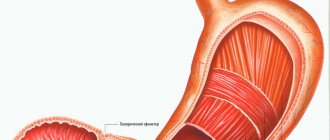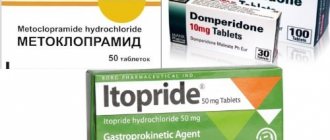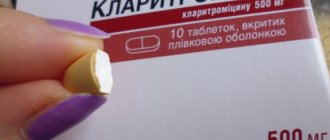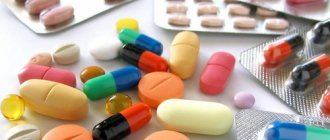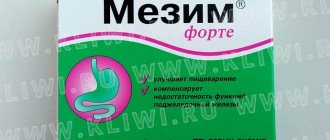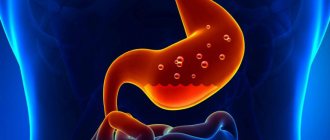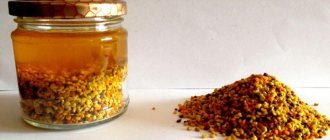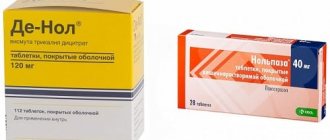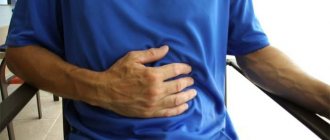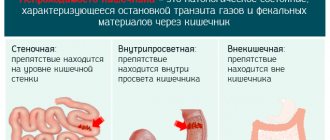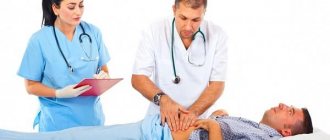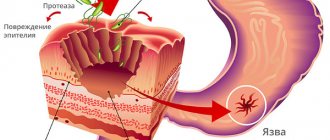The human stomach is subject to stress every day. A sedentary lifestyle, stress, eating on the go, fast food are just some of the factors that destroy the human stomach day after day. At one point, the body malfunctions and you need to look for helping substances that will help the digestive organs return to normal. There are a lot of products on the pharmaceutical market whose task is to normalize the activity of the stomach, read about some of them below.
EFFECT OF TAKING PROKINETICS
The variety of prokinetics can confuse a person who decides to choose his own medicine. And this is a good reason not to self-medicate, but to go see a doctor.
There are really a lot of prokinetics, and they all have different effects. Because they affect different receptors involved in the regulation of motor-evacuation function of the gastrointestinal tract: adrenergic and dopaminergic, cholinergic and serotonin, cholecystokinin and motilin. In general, it is not surprising that the principles of action of prokinetics differ.
But they also have a lot in common.
The physiological effects of prokinetics include:
- increased tone of the lower esophageal sphincter;
- normalization of the phase relationship of the migrating motor complex;
- significant increase in antroduodenal coordination;
- positive effect on the evacuation function of the stomach;
- increase in productive intestinal motility;
- a significant increase in the ability of the gallbladder to contract.
Diagnostics
Diagnosis is carried out on the basis of a study of the patient’s objective data, laboratory tests, and instrumental examination methods:
- X-ray of the stomach with barium is a method that allows you to track the motor and evacuation functions of the organ;
- Ultrasound – abnormalities in the muscle layer of the stomach are monitored;
- electrogastrography – examines the motility of the gastric organ;
- endoscopy - the sensitivity threshold of the stomach wall is determined.
After examination and clarification of the cause of the malfunction in the motor function of the body’s digestive system, treatment is prescribed.
WHEN ARE PROKINETICS PRESCRIBED?
Motor stimulants are primarily prescribed for diseases associated with disorders of motor activity of the upper gastrointestinal tract (GERD). Prokinetics tone the lower esophageal sphincter, the valve between the esophagus and stomach that is the cause of your heartburn.
If it is relaxed, acid and food debris from the stomach are thrown into the esophagus and irritate the mucous membrane and its walls. Hence the unpleasant burning in the epigastric region and sour belching. In this case, prokinetics can be used separately - and they will be effective. Or it can be combined with antisecretory drugs (reducing the production of hydrochloric acid in the stomach).
Gastric motility
As soon as the food bolus enters the junction of the esophagus and the stomach, muscle contraction of the organ begins. There are three types of motor skills:
- rhythmic contraction of muscle fibers - begins gradually in the upper part of the organ, with intensification in the lower part;
- systolic muscle movements - at the same time there is an increase in muscle contractions in the upper part of the stomach;
- general movements - contraction of all muscle layers of the stomach leads to a reduction in the food bolus by grinding it with the help of gastric secretions. Depending on the type of food, part of it, after processing in the stomach, is evacuated into the duodenum, and part of the food bolus remains in the stomach for further grinding and digestion by gastric enzymes.
Depending on how the peristalsis of the stomach works, the health of the entire digestive system of the body depends.
ITOMED
Itomed belongs to the category of motilin receptor agonists, and there are several circumstances that distinguish it from other prokinetics.
- Itomed selectively acts only on those areas where the disorder has occurred, without affecting the normally contracting sections. Thus, it exclusively restores impaired tone and contractions in the digestive system.
- Itomed quickly enters the bloodstream and begins its therapeutic effect (it works within 30-45 minutes after administration).
- Itomed is safe and practically does not cause side effects (individual intolerance to the drug components is possible).
Important: the previously common prokinetic drug metoclopramide (cerucal, raglan, etc.) is considered obsolete due to a large number of side effects. For the same reasons, bromopride (bimaral), which is similar in pharmaceutical properties to metoclopramide, has not been sold in Russia for several years.
Gastric motility is impaired in many of its diseases, accompanied by impaired tone of the muscular lining, disorders of peristalsis and evacuation of contents. The pharmacological group of prokinetics restores the motor and evacuation function of the gastrointestinal tract. In addition, almost all of these drugs help eliminate nausea. Let’s compare the differences between the main drugs that improve gastric motility.
How is the treatment carried out?
Timely diagnosis and treatment will help avoid complications.
To bring gastric motility back to normal, it is necessary to accurately determine the type of pathology. To do this, you should contact a gastroenterologist. Based on the presence or absence of certain symptoms, the doctor may suspect the type of pathology. After examination and making an accurate diagnosis, the gastroenterologist will be able to decide on the direction of therapy. For treatment, medications are used that increase or slow down gastric motility, folk herbal remedies, and physiotherapy. A prerequisite for the treatment of any digestive disease is diet.
Necessary drugs
There are special drugs that affect the motor activity of the gastrointestinal tract. Medicines affect the muscles of the stomach or the receptors of the nervous system that regulates the tone of the organ, in order to stimulate or inhibit contractility. Only a doctor can prescribe medicine, determine the dosage and duration of use. Common drugs for the treatment of pathology:
The drug will quickly eliminate stomach discomfort.
- Prokinetics - tablets that will help improve peristalsis and increase the rate of evacuation of food from the stomach: "Motilium";
- "Passengers";
- "Ganaton";
- "Cerucal";
- "Itomed."
- "Atropine sulfate";
- antacids;
Light exercise and abdominal massage will also help restore peristalsis.
Natural Medicines
Drug therapy can be supplemented with properly selected folk remedies. To regulate peristalsis, there are recipes made from natural ingredients. By consuming ginger, infusion of the herb wormwood, buckthorn decoction, vegetable oils on an empty stomach, dried fruits, plantain seeds, wheat bran, we stimulate the contractile activity of the stomach. Peppermint, chamomile, lemon balm, fennel seeds, centaury, lavender tea, oregano inhibit excess peristalsis. To improve motor skills, it is useful to drink berry and vegetable juices and include fermented milk products in your diet.
Drugs to improve stomach function based on domperidone:
- Motilium. It is used for pathologies of the upper gastrointestinal tract, in which the motor function of the stomach is impaired, and also as an antiemetic. Compared to first-generation prokinetics, motilium does not penetrate the BBB, and therefore does not cause side effects.
- Motilak. Antiemetic, prokinetic, medicine for the treatment of functional intestinal disorders. Does not affect gastric secretion. Stimulates the secretion of prolactin.
- Passengix. Antiemetic. Increases motility of the stomach and duodenum, accelerating evacuation, eliminates nausea and vomiting.
Symptoms of pathology
Frequent vomiting and nausea after eating are possible.
Poor motor activity of the stomach affects a person’s well-being. Contractile activity and muscle tone can increase or slow down, and the characteristics of the symptoms depend on this. If the stomach muscles are sluggish, the patient suffers from heaviness in the stomach, a feeling of rapid satiety with a small amount eaten. And hyperkinesis leads to diarrhea. Pathology can also manifest itself with the following symptoms:
- heartburn;
- nausea;
- vomit;
- abdominal pain;
- belching;
- bad breath;
- flatulence;
- constipation or diarrhea;
- insomnia, mood changes;
- weight gain or loss.
Preparations based on itopride:
Ganaton. New generation of prokineticists. The main effect is to restore the functioning of the stomach. Stimulates the smooth muscles of the stomach, speeds up the transit of food. Does not affect gastrin levels. Used for non-ulcer dyspepsia and symptoms of chronic gastritis. Permitted from 16 years of age.
.
- Itomed. Stimulates gastrointestinal motility. The drug has no neuroendocrine or central extrapyramidal side effects. Can be combined with medications that interact with liver enzymes.
Contraindications
Before using the above groups of drugs, you must consult with a gastroenterologist and therapist, since only after diagnosis is their use considered possible.
Contraindications to their use will be:
- Oncology of the gastrointestinal tract, in particular the intestines. Laxatives and any other medications that improve peristalsis may not only not solve the problem, but also aggravate it. If the intestinal cavity is completely or partially closed by a tumor or polyp, then a sharp increase in pressure due to stimulation of motility can cause acute intestinal obstruction, intestinal volvulus, or perforation of the formation.
- Ulcerative defects of the gastrointestinal tract.
- Threatening bleeding.
- Intestinal obstruction.
- Inflammatory diseases of the gastrointestinal tract in the acute stage.
- Allergic reaction to the components of the drug.
- Acute surgical pathology.
- Pregnancy and lactation period. This contraindication is relative, since the use of lactulose-based laxatives (Duphalac) can be prescribed to pregnant women and even infants.
We recommend reading:
Methods for improving intestinal motility: drugs, diet and exercise
Gastrocardiac syndrome
This disease is characterized by the following symptoms:
- pain in the heart area;
- arrhythmia;
- dizziness;
- increased blood pressure (sometimes significant).
If you have high blood pressure due to gastritis, you should think about other reasons for this phenomenon
Causes of weak peristalsis
Many factors influence intestinal function, and now we will try to find out which of them slow down and even completely stop peristalsis, and which can stimulate intestinal motility.
Reasons that slow down peristalsis:
- Unbalanced nutrition , when the diet is dominated by foods with high calorie content, foods of artificial origin (fast foods with a lot of spices and sauces and foods with added chemicals - chips, crackers), lack of regularity of meals, its speed (eating a sandwich on the way to office).
- Treatment with antibiotics or other drugs that reduce the balance of intestinal microflora.
- Diseases of the gastrointestinal tract of all parts, including the stomach, liver, and gall bladder.
- Tumors in the intestine, both small and large.
- Behavior of surgical intervention on the intestine.
- Inactive lifestyle , constant sedentary work, frequent climate change.
- Predisposition to constipation, its chronic course.
- Frequent stress, negative experiences.
- Disturbance in the functioning of nerves, improper innervation of the intestinal walls.
Factors that enhance intestinal motility:
- Constant walking and exercise.
- Maintaining a balanced diet.
- Compliance with the drinking regime is very important for constipation in order to soften the masses and improve their passage through the intestines.
- Using intestinal stimulation - massages and morning warm-ups.
- Normalization of lifestyle, regular and sufficient sleep, adherence to a schedule.
- Undergoing constant annual medical examination and timely treatment of intestinal diseases.
If your life mostly or even completely consists of items on the first list, then do not be surprised that intestinal motility weakens.
To prevent and correct this, live according to the points in the second list and then intestinal problems will leave you for a long time.
But if peristalsis is already impaired for some reason, then there are means to improve intestinal motility in adults and children.
Pressure with gastritis
Gastritis is an inflammation of the gastric mucosa caused by exposure to the bacterium Helicobacter pylori and poor diet. Low blood pressure with gastritis is usually considered to be a concomitant symptom of this disease. High blood pressure in this case is completely uncharacteristic. The presence of gastritis does not provoke surges in blood pressure and cannot be the cause of its elevated levels. If there is still arterial hypotension against the background of gastritis, then this is a consequence of other factors, such as, for example, heredity.
The main symptoms of gastritis are characteristic pain in the upper abdomen, an unpleasant taste in the mouth
Types and list of drugs
These are medicinal laxatives that enhance intestinal motility and the passage of feces. They can be divided into several groups:
- Medicines that increase stool volume. These drugs are taken with water and help soften stool. Representatives are Mukofalk, Fibralax.
- Prokinetics. They exert their effect through the release of acetylcholine. The main advantage is that their long-term use has virtually no negative side effects. This group includes Ganaton, Itomed.
- Osmotic laxatives. Drugs such as Duphalac, Portalac have a good osmotic effect, retain water well, and are the drugs of choice for pregnant women and children. Osmotic laxatives also include salt-based drugs. The mechanism of action of saline laxatives is based on improving the permeability of the intestinal walls, due to which a large amount of water enters the intestinal lumen, thereby causing the urge to defecate. Representatives: Glauber's salt (sodium sulfate), Magnesium citrate.
- Softening drugs or plasticizers are actively used in postpartum women or people who have undergone surgery. They are prescribed to patients who need to minimize the load on the anterior abdominal wall. However, their long-term use is not recommended due to the removal of large amounts of electrolytes from the body. Representatives: Lanolin, various oils, wax.
How to improve peristalsis?
Restoring intestinal function and enhancing peristalsis is possible only by using several types of treatment simultaneously, namely:
- Folk remedies. This is the first thing that is better to try than to swallow advertised pills, which can only cause harm if the diagnosis is not established.
- Drugs that stimulate bowel function can also be purchased at the pharmacy, but before doing so, you should consult a doctor so that he can select them for you individually and also prescribe the required dosage.
- An excellent way to enhance peristalsis is gymnastics. It helps increase blood flow to the intestines, as well as the pelvic organs, thereby helping to move feces forward through the intestines. Helps strengthen the walls of the large and small intestines.
- You can increase peristalsis by following a certain diet. Its main rule is that we eat and drink everything that is healthy, and don’t even try anything that is not healthy.
Improving peristalsis will largely depend on how the person himself feels about solving his problem.
If he carelessly does gymnastics, washes down pills with coffee after lunch at a pizzeria, then he will not be able to improve his bowel function.
In this case, the intestines did not work, do not work, and will not work. But for those who want to normalize the functioning of their intestines, we will tell you in more detail about each point in the treatment of weak peristalsis.
Signs of impaired intestinal motility
Intestinal motility is impaired when the following signs are present:
- Frequent pain in different areas of the abdomen. The pain varies in intensity and depends on the time of day. Increased pain spasms are associated with the emotional state and physical activity.
- Excessive gas production and a feeling of bloating in the abdomen.
- Violation of the act of defecation. Characterized by persistent constipation, developing into chronic forms.
- Increase in weight caused by disorders in metabolism and digestion.
- A sharp negative change in general well-being, expressed in constant weakness, irritability, and sleep disturbances.
- Increasing signs of poisoning of the body (allergies, acne and purulent rash).
Return to contents
Symptoms of hypertension in the stomach
Symptoms of gastric hypertension occur against the background of defects in peristalsis. Symptoms of the disease are most often mild. Mostly they are similar to signs of peptic ulcer:
- pain in the abdominal cavity;
- pain may periodically worsen, especially during times of stress or strong emotions;
- nausea;
- gagging.
Since a hypertensive attack is most often secondary, its symptoms are justified by the underlying disease.
Diagnostic capabilities
Diagnostic tactics for the presence of dyspeptic complaints in patients with diabetes are similar to those for unexamined dyspepsia. It excludes the presence of stomach tumors and gastric and duodenal ulcers, mechanical causes, NSAID gastropathy (stomach damage caused by taking nonsteroidal anti-inflammatory drugs), and portal hypertension.
Instrumental diagnostics are used to determine the causes and condition of the gastrointestinal tract.
Scintigraphy
After excluding all serious organic pathologies, gastric scintigraphy with technetium is used, which is the “gold standard” for diagnosing gastric motility
. The essence of the method is that the patient accepts a labeled radioactive trace, the progress of which is monitored step by step. Specifically, each photo is taken every 15 minutes for 4 hours.
The requirement for scintigraphy is to discontinue medications that affect gastric motility 2-3 days before the procedure.
If food remains in the stomach after 2 hours or more in a volume of 60% of the total mass, and after 4 hours only 10% remains, we can confidently speak about the presence of gastroparesis. The sensitivity of the technique is 93%.
Breath test
To carry out a breath test, which is used to determine the rate of evacuation of gastric contents, caprylic acid labeled with a carbon isotope is used.
The main testing mechanism is to change the ratio of different isotopes in the exhaled air. The patient exhales air into the tube before testing begins. This air sample will be used as a reference for comparison.
Then the patient takes breakfast, which is mixed with labeled caprylic acid. Every 15 minutes for 4 hours, the subject exhales into the test tubes. This test has some advantages over scintigraphy. It is easy to perform, safe and can be used even in children and pregnant women, since there is no radiation exposure to the body.
Ultrasound of the stomach (video)
This method only indirectly confirms the emptying of the stomach and the evacuation of fluid from it. After eating consistently, the doctor evaluates the residual volume of the contents.
X-ray research methods
The X-ray technique is based on taking a contrast agent, which is barium sulfate, and a series of X-ray images at certain time intervals. To assess violations of the MEF, this technique is used only in Russia. This is due to the fact that the technique is generally available, inexpensive and is carried out in almost any medical institution.
Among the disadvantages of the method, of course, the first place comes from radiation exposure and the ability to determine the presence of the disease only in the later stages of MEF disruption, that is, already with the development of gastroparesis. In addition, barium sulfate taken in patients suffering from both diabetes mellitus and MEF disorder is detected even a day after taking it.
Generalized clinical picture
What symptoms are present in all forms of hyperkinesis? In all cases, without exception, a person experiences a group of manifestations.
The main manifestation of hyperkinesis is increased motor activity. It has several properties, which makes it possible to diagnose hyperkinesis. Involuntariness - occurs in addition to the conscious desire, will of the subject, unpredictability - at any moment, often without an obvious provocateur at the moment, the inability to control the process. Which puts the patient in a defenseless position.
Due to the development of involuntary movements, especially if it is a severe type of the syndrome, increased anxiety develops. Lack of self-confidence. Possible addition of phobias, fear of repetition of an episode of motor activity. Possible withdrawal into oneself, a tendency to isolation.
In some cases, behavioral problems. Irritability, apathy, avoidance of social contacts and establishing new connections.
All of these are parts of one whole.
Hyperkinesis must be distinguished from disorders related to them and similar in clinical picture. For example, synkinesis.
Synkinesis and hyperkinesis - what is the difference?
In both cases, involuntary violent movements occur that cause discomfort. But with synkinesis, they join normal movements. For example, raising a hand is accompanied by an involuntary increase in amplitude, the same with turning the head. Hyperkinesis also develops at rest. In addition, synkinesis exists for a much shorter time. Another process can continue indefinitely and be constantly repeated.
Based on these criteria, states are delimited. Otherwise, the symptoms are almost identical. The treatment methods are also not fundamentally different.
Prevention of violation
Clinical recommendations for prevention have not been developed. The issue remains debatable. Because many forms of the pathological process cannot be prevented. For example, hereditary. However, there are some recommendations:
- Avoiding stress.
- Avoiding excessive physical activity.
- Be attentive to your own body, avoiding dangerous situations that can provoke a head injury. This is not always possible.
- Full sleep.
- Timely treatment of infectious pathologies of any location. To reduce the risk of brain complications. Meningitis or encephalitis.
- Correct use of medications according to the regimen approved by the doctor. Any disturbances in health are grounds for repeated consultation with a specialist for a possible revision of the course.
- Timely visit to the doctor for a preventive examination. At a minimum, you will need a therapist. It is better to go directly to a neurologist.
- Avoidance of harmful working conditions, exposure to toxic substances on the body, radiation, and environmental negative factors. Compliance with safety precautions in the workplace.
Growth factors
After eating, there are three reasons that can trigger an increase in blood pressure:
- To digest the resulting “fuel,” the gastrointestinal tract requires an increased amount of oxygenated blood. The heart muscle, responding to the command of the brain, begins to pump blood more intensely into the abdominal cavity. Blood vessels that have lost elasticity do not have time to respond adequately, which leads to an increase in pressure.
- Any food consumed by a person leads to changes in the composition and viscosity of the blood. Receiving additional nutrition from the stomach, the body produces more blood cells and plasma proteins - the amount of blood increases.
- Food containing table salt promotes thirst and retention of excess fluid in the body. This also leads to an increase in blood pressure.
Recommendations
As you understand, an increase in blood pressure after eating always occurs, regardless of whether you suffer from hypertension or not. For some, this happens unnoticed, while others see this as a real problem - it all depends on the individual characteristics of the body. If afternoon pressure surges give cause for concern, then you should remember several rules that any person prone to hypertension should follow.
- do not overeat - you should eat often, but in small portions (optimally 5-6 times a day);
- exclude fried, spicy and smoked dishes from the menu;
- radically reduce the consumption of salt and spices, or better yet, give them up altogether;
- alcohol, which at first dilates blood vessels, after a short time leads to a jump in blood pressure - it should be excluded completely;
- control the amount of fluid you consume - one and a half liters is enough during the day;
- minimize consumption of tea and coffee;
- eliminate foods containing cholesterol from your diet;
- during meals, only engage in eating - watching TV shows and reading newspapers provokes the outflow of blood from the abdominal cavity to the brain, which significantly impairs digestion;
- do not create additional problems for the body - limit a single serving to 200-250 g.
